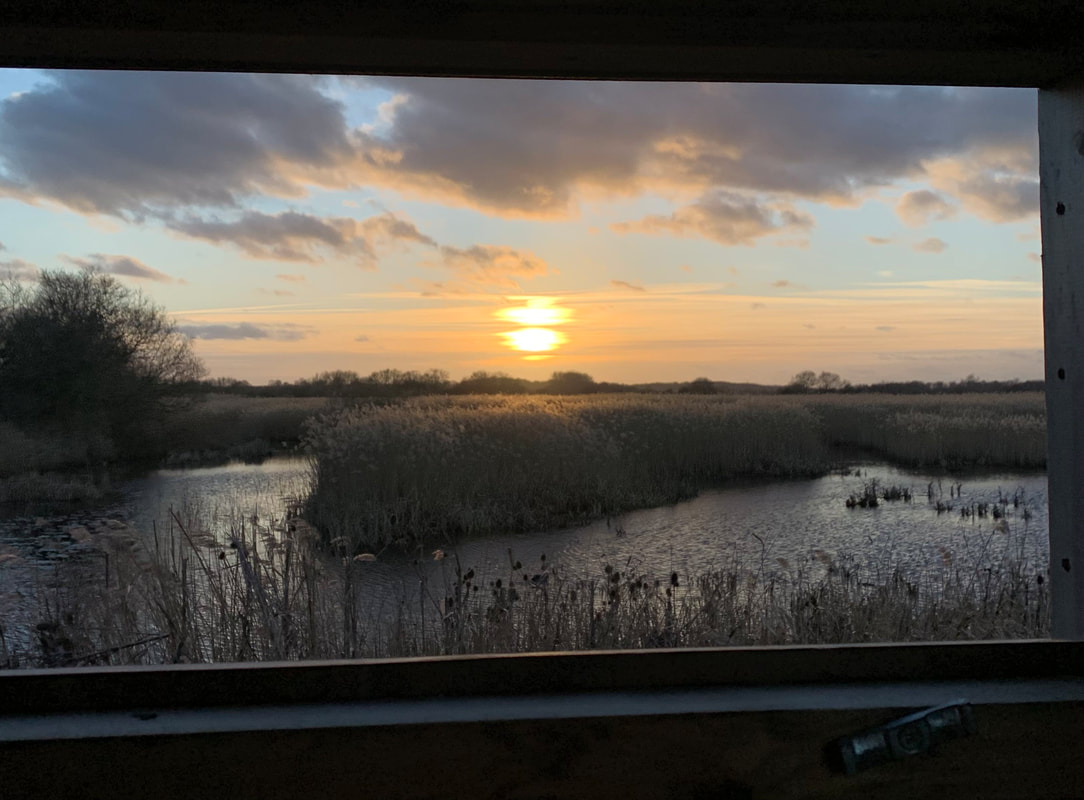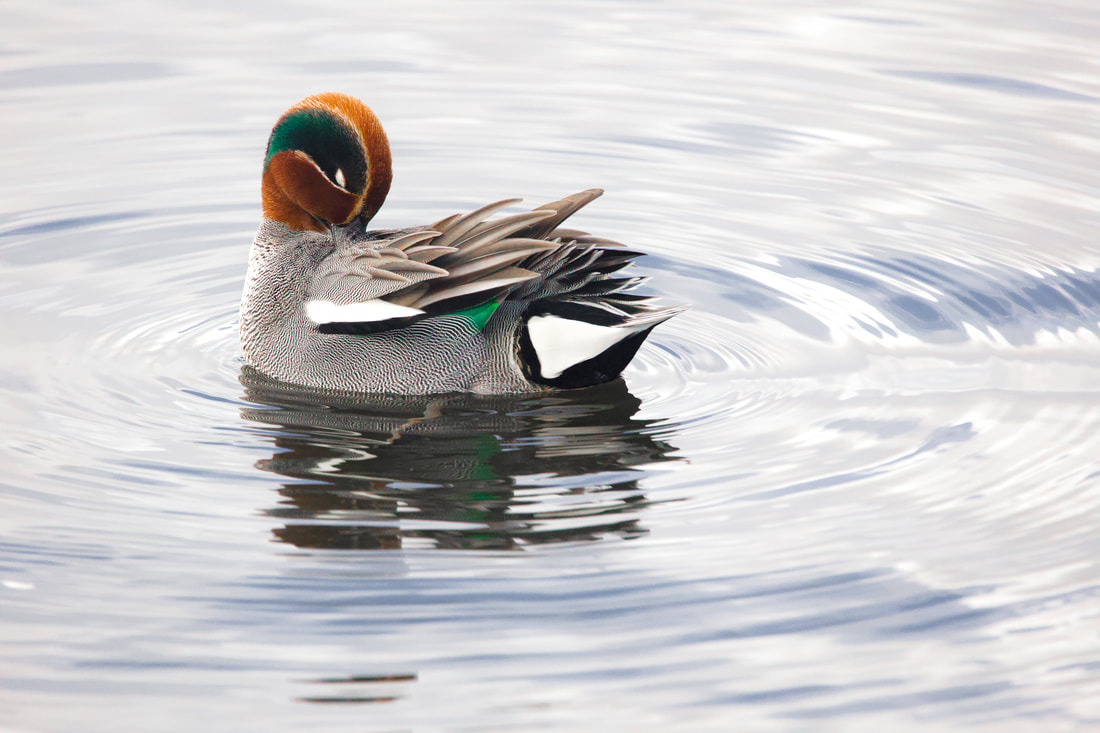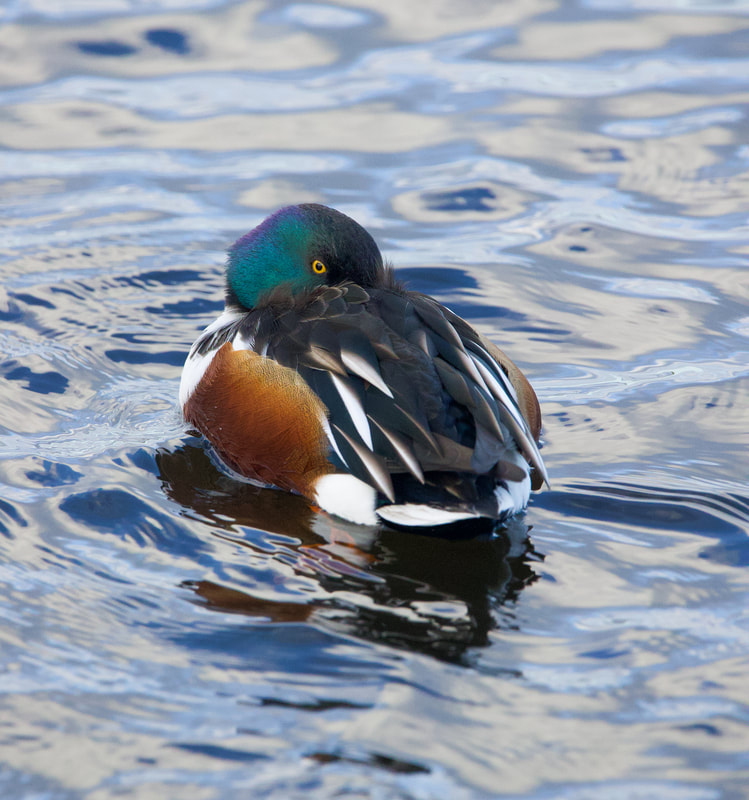|
by Jacob Watson-Howland Situated just a stone's throw from the UNESCO world heritage city of Canterbury, Stodmarsh National Nature Reserve is a biodiversity hotspot and a stronghold for many threatened species including large flocks of Lapwing, Sedge Warblers in the summer and a rare bird of prey I saw for the very first time (more on that below!) It's the 2nd week of 2023. So far the gloomy weather hadn't displayed any worthy signs of improvement. That was until the Friday, when the sun finally decided to make a cameo after hiding behind the clouds all week ! With this long awaited appearance of some golden winter light, I decided to give one of the best nature reserves in the country a visit: Stodmarsh National Nature Reserve. This nature hotspot is the largest extensive reedbed in the Southeast of England, covering a whopping 623.2-hectare (1,540-acre). It's also a Ramsar internationally important wetland site and a Special Area of Conservation, full of unique habitats such as reedbeds, open water (which can form mudflats), water meadows and rough grazing, alder and Carr (wet) woodland, as well as River Stour that runs beside it. The diversity of different habitats results in a richness of amazing species of flora and fauna, with every season showcasing a different star studded lineup of bucket list species; particularly birds. All year round there are: Bittern, Marsh Harrier, Barn Owl, Bearded Tit/Reedling, Cetti’s Warbler, Water Rail, Kingfisher, resident ducks and waders. With spring comes the arrival of new species including Garganey, Hobbies that congregate in huge numbers before dispersing to mate, calling Cuckoos, the highly threatened Turtle Dove and Nightingale, as well as water-associated warblers such as Sedge and Reed Warblers. Late spring/summer is when the reedbeds come to life, Reed warblers can be heard singing its rhythmic song in the dense reeds whilst Sedge warblers sing their noisy rambling warble, the elusive and skulking Cetti's warblers can be heard in most places with their explosive outbursts blowing their concealed cover. If you're lucky you may come across a passage migrant such as: a Spoonbill, Common, Curlew & Wood Sandpipers, Spotted Redshank, Ruff, Greenshank, Little & Temminck’s Stint, Whimbrel, Black & Arctic Tern, Osprey (which I once saw when I was very young here!), Red Kite, Red-backed Shrike, Whinchat, Wheatear, Ring Ouzel. If that wasn't enough, rarities have included: Glossy Ibis, Cattle Egret, American Coot, Baillon’s and Spotted Crake, Black-winged Pratincole, Red-footed Falcon, Penduline Tit, Savis Warbler & a host of others, including the Purple Heron I spotted last spring ! That leaves us with the season that I'm currently writing this in; winter. Although at first glance this season may seem a little gloomy and dull, if you delve deeper and give it a chance it will provide you with spectacular conditions and a whole array of different species to keep an eye out for ! I'd made it to the reserve by the early afternoon. I was pleasantly surprised to see that it was a lot busier than usual; everyone must had seen the forecast and had the same idea as me ! Like usual, I decided to go to the closest hide first: the Reedbed Hide, which overlooks an area of open water/mudflats with reeds bordering the edges. Upon arrival, I noticed the water had risen considerably since my last visit in autumn. Beforehand, this had been mudflats with just a handful of waders and to my surprise was now covered in a carnival of swimming ducks ! A large proportion of the cluster were the beautiful Teal; a beautiful duck with striking green patches on its wings. The males also have a stunning green eye-patch that compliments their chestnut head (see below). A large amount are currently present at Stodmarsh as Teals congregate to low-lying wetlands en masse in winter from the Baltic and Siberia, particularly in South England, making Stodmarsh a stronghold for this amber-listed species as a large percentage of the North-west population overwinter in this region. Within the cluster of Teals another beautiful species of duck was present, the striking surface-feeding Shoveler. These are incredibly unique wildfowl, with their gigantic spatulate bills feeding by sweeping them back and forth through the water surface, filtering out small invertebrates, plant seeds and other plant matter. How come these eye catching birds were here though ? Although Shoveler breed in the North Kent marshes, breeding birds migrate further South out of breeding season. These are then replaced by the Northern populations in winter, with 20% of the North-west Europe population arriving to the UK, making it an amber-listed species like the Teal. (Below) Shoveler resting in the ripples (both images are exclusive, taken by me, Jacob Watson-Howland): So far in 2023, there hasn't been a 3 day period where I haven't gone to Stodmarsh. I'm aiming to create a short film on the reserve, documenting the behaviour of many of the spectacular species here such as Marsh Harrier air display, which is an awesome courtship behaviour! I've also been in search of the elusive Tawny Owls, which I've had few success with in the wet woodland so far other than a few calls or sightings was after sunset. However, these intriguing owls (my favourites!) breed as early as March, so all the effort I'm currently putting into locating them will be worth it when they are busy during the day feeding their young as the nights continue to get shorter! At the moment there's also huge flocks of redwings and fieldfares, which is a truly marvellous spectacle. It won't be long until our winter friends leave to head back to their northern breeding grounds and our southern summer migrants join us. How exciting ! If you enjoyed this blog made sure to all my social media accounts @jjwhphoto, where I post photos and nature-based content regularly. If you're interested in purchasing any images and want to feel more connected to nature then make sure you checkout my brand new store page on this website; which has a wide range of goo quality and affordable nature items made for you or as a gift for others! Make sure to comment your favourite species found in Stodmarsh and whether you want to visit it, you should! By Jacob Watson-HowlandA young aspiring wildlife filmmaker, photographer and writer from the UK who is an advocate for protecting and restoring the natural world.
1 Comment
|
AuthorJacob J. Watson-Howland is a fine art photographer, writer and entrepeuner from the UK. He's written for established organisations like the RSPB, and is featured in multiple high-end photo publications such as Digital Photographers Magazine and in Bradt Guides '9 of the best young wildlife photographers'. Archives
June 2024
Categories |



 RSS Feed
RSS Feed